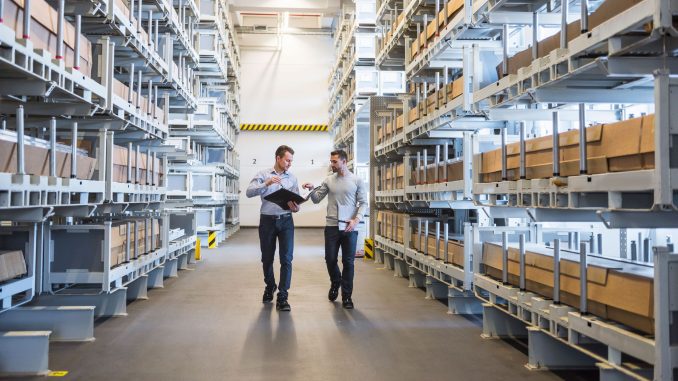
In an interconnected, global economy such as the one we live in today, businesses across all sectors need to create contingency plans for their supply chains. The COVID-19 pandemic, natural disasters, geostrategic instability and supply chain snafus—all of this has made quite clear, if in fact there were any doubts, the need to reduce risks and keep supply chains uninterrupted. This paper discusses what kind of supply chain system companies should strive for in order to weather uncertainty and still maintain operational efficiency.
What Is Supply Chain Resilience
Supply Chain resilience is the ability of a company to anticipate, respond to and recover from disruptions while ensuring continued operation of essential business functions and meeting customer requirements. A resilient supply chain is one of agility, flexibility, redundancy collaboration and proactive risk management plans.
Risk Assessment And Scenario Planning
The first step in building a resilient supply chain is to do an in-depth risk assessment, identifying potential weak points in supply chains. Companies should take into account factors such as supplier tie-ins, national risks, natural disasters, economic fluctuations, law changes or cyber-attack threats. Scenario planning means you simulate what happens if there is a disruption and seek to develop measures capable of cutting risks and reducing impact.
Diversification of Suppliers and Partnerships
Depending completely upon one source or relying on just a few suppliers increases the risk of disruption. Organizations ought to multiply their
our choice of suppliers, develop alternative procurement options, and form strategic alliances with secure suppliers and warehousers. Working closely together with suppliers for joint risk management, sharing information and planning responses together.
Optimize Inventory and View the Supply Chain
Keeping inventory levels optimal is essential for balancing the fluctuations in supply and demand, while avoiding extra inventory costs. Technologies that organizations use to optimize inventory include such technologies as safety stock management, demand forecasting and hbr segmentation. These products help companies cope with the intricacies and disruptions of today’s demand Supply chain visibility tools and technologies allow for stock levels, transportation routes raw material yield rates among others to all be viewed in real-time. This has empowered proactive decision making by company leaders and enabled companies to manage risks effectively. Take Physical Measurement with Digital Technology Digital technologies are the true backbone in today’s resilient supply network. Automation, artificial intelligence, machine-learning technologies that collect and manipulate data in real-time (whether those being physical interconnects or Software As A Service), Cloud Computing which lets you run applications from public servers via network connection instead of from your own hard drive: all these ensure that accurate data can be gathered continuously and used for decision-making. Advanced toolsets like Predictive Analytics and supply chain modeling help organizations anticipate demand patterns, decide how many raw materials should be in stock on any given day Dichotomize information risk and then simulate what-ifs to be ready to deal with whatever comes along. Mighty is the main force behind true global supply chain flexibility. Responding quickly to the fluctuations of markets, customer preferences and disruptions requires not only a flexible foundation but also an agile operations system. Manufacturing processes have been streamlined to make them more flexible, logistics channels are more agile which means transport options and delivery accuracy can move with changes in product delivery times. Employees have multiple skills base or training and production scheduling can adapt to changes in plant capacity levels easily — all these are measures designed to make short-term adjustments cost less both economically and in terms of time . Organizations can increase their flexibility through training and constantly training their employees. To that end, flexible work arrangements are also commonly employed. Using digital collaboration tools, for example CSoft, enhances the agility and resilience of organizations. Continuous Monitoring as Well as Assessment of Performance We must monitor key performance indicators (KPIs) and other metrics in order to measure the health and resilience of our supply chains. Tracking KPIs—such as inventory turnover, lead time, the degree to which products are delivered on time, supplier performance, supply chain costs and risk—sheds light on operational effectiveness and resilience. This data-driven approach reveals a clear contrast with traditional supply chain management which is incredibly difficult to change. By adopting the insights that stem from our own organizations’ constant improvement programs, our supply chains continuously become more robust.
Business Continuity Planning and Crisis Management
In responding to disruptions and keeping the wheels turning in tough times, there is absolutely no substitute for sound business recovery planning and crisis management systems. A business recovery plan (BCP) should consist of risk assessments, communications plans, contingency arrangements, alternative sources of supply, supply-chain maps and emergency response procedures. Regular tests, training and simulations will ensure that BCPs work in emergency situations.
Collaborative Risk Management and Supply Chain Resilience Culture
Creating a resilient supply chain is a common task which must involve the coordination of internal stakeholders, external partners, suppliers, customers and regulators. A resilient culture, is, in essence, one which prevails throughout the supply network. This culture is one of openness, trust and cooperation. Cross functional teams, risk management committees, supplier forums and collaborative platforms enable knowledge sharing, the adoption of best practices and collective action to reduce risk.
Conclusion
Building a resilient supply chain is a long journey, which requires strategic vision, proactive risk management, technological innovation and communication as well as continuous improvement. Through such strategies as risk assessment, diversification of suppliers, inventory optimization, digitalization, flexibility, careful monitoring, business recovery planning and the fostering of a resilient spirit, companies can increase their ability to stand up under emergencies, ensure continuity of operations and deliver value to customers. In the dynamic and chaotic business environment that exists today, investing in supply chain resilience is not just about having a leg up over your competitors, but rather it is necessary for long term success and sustainability.